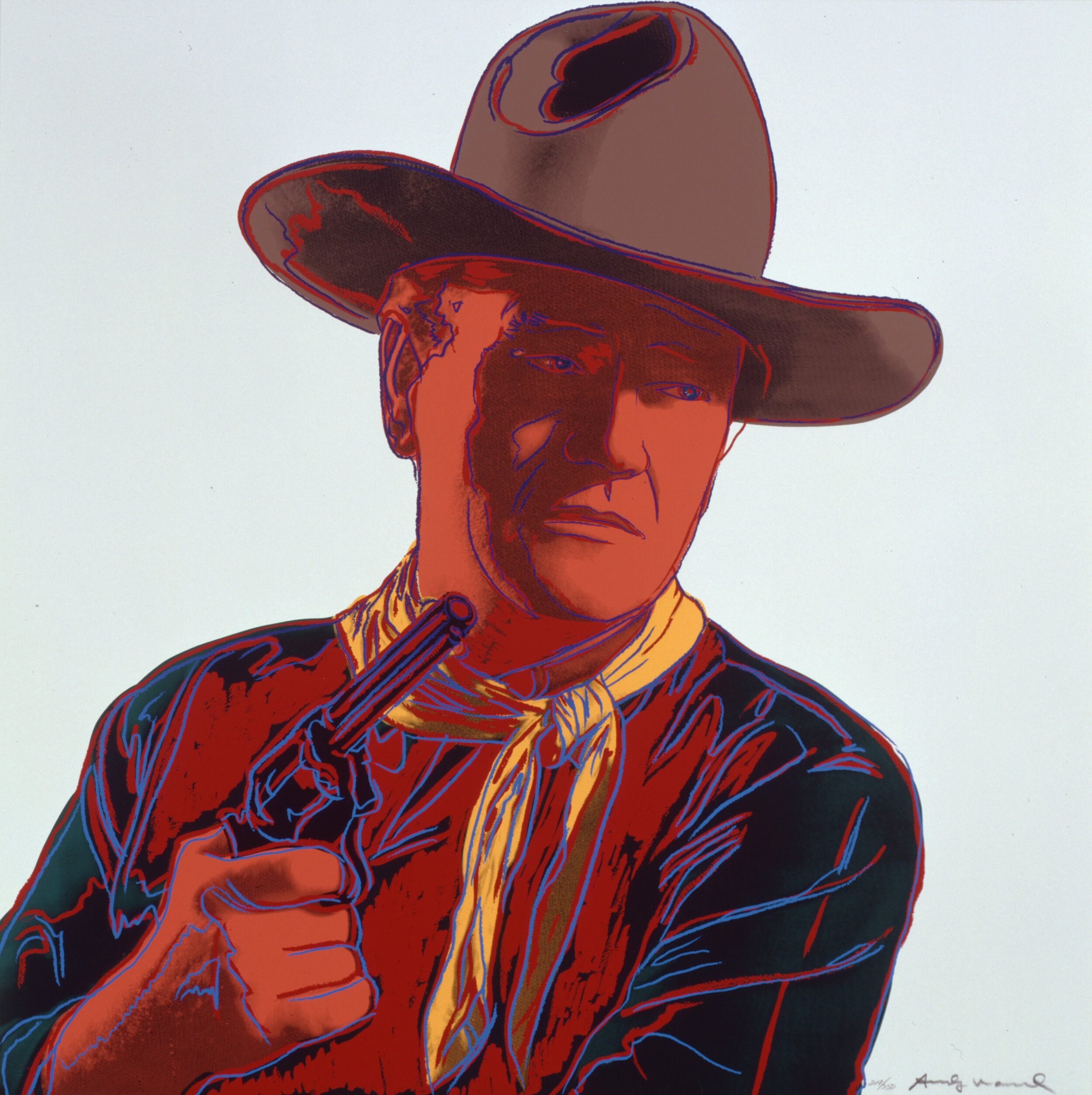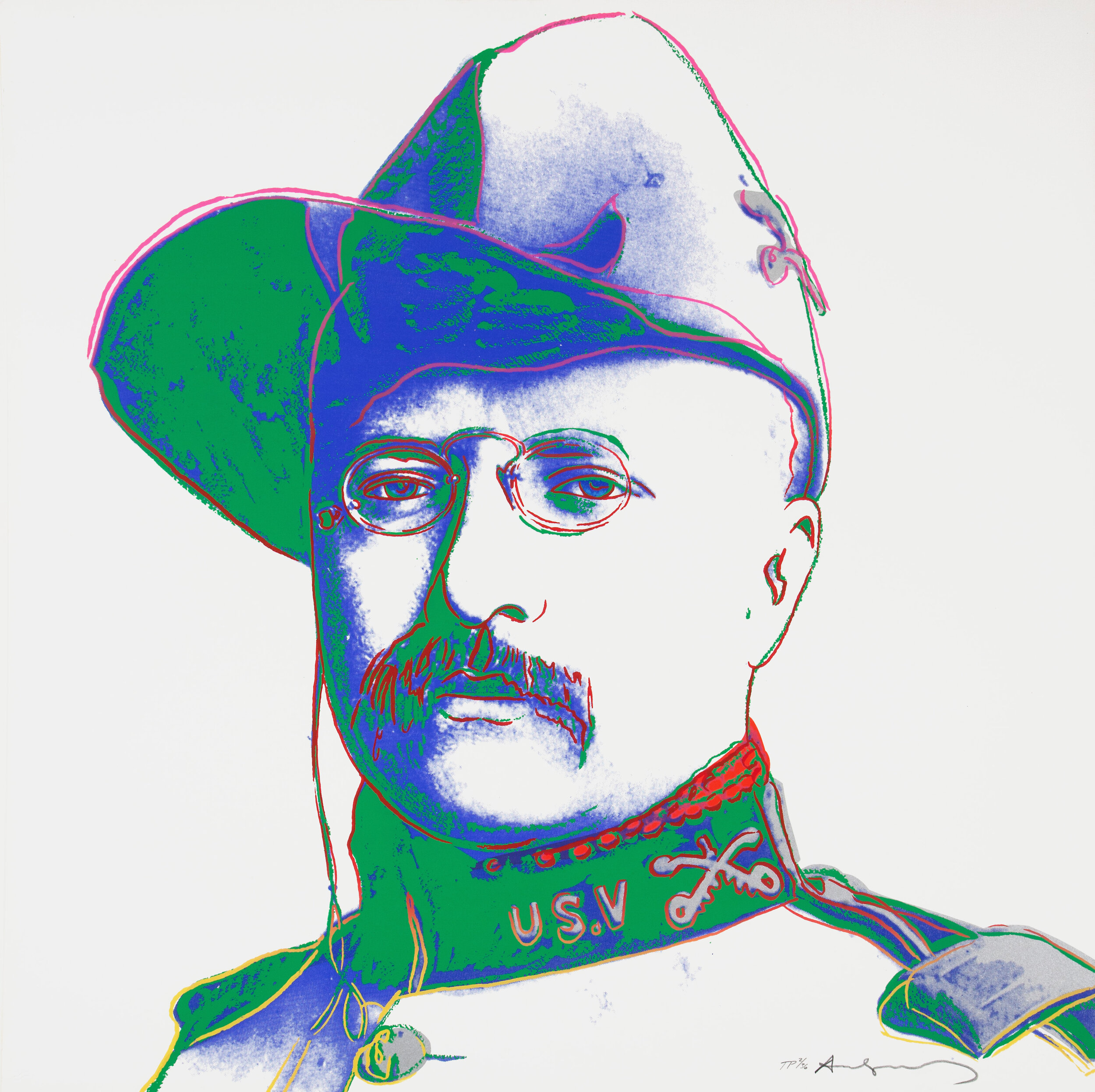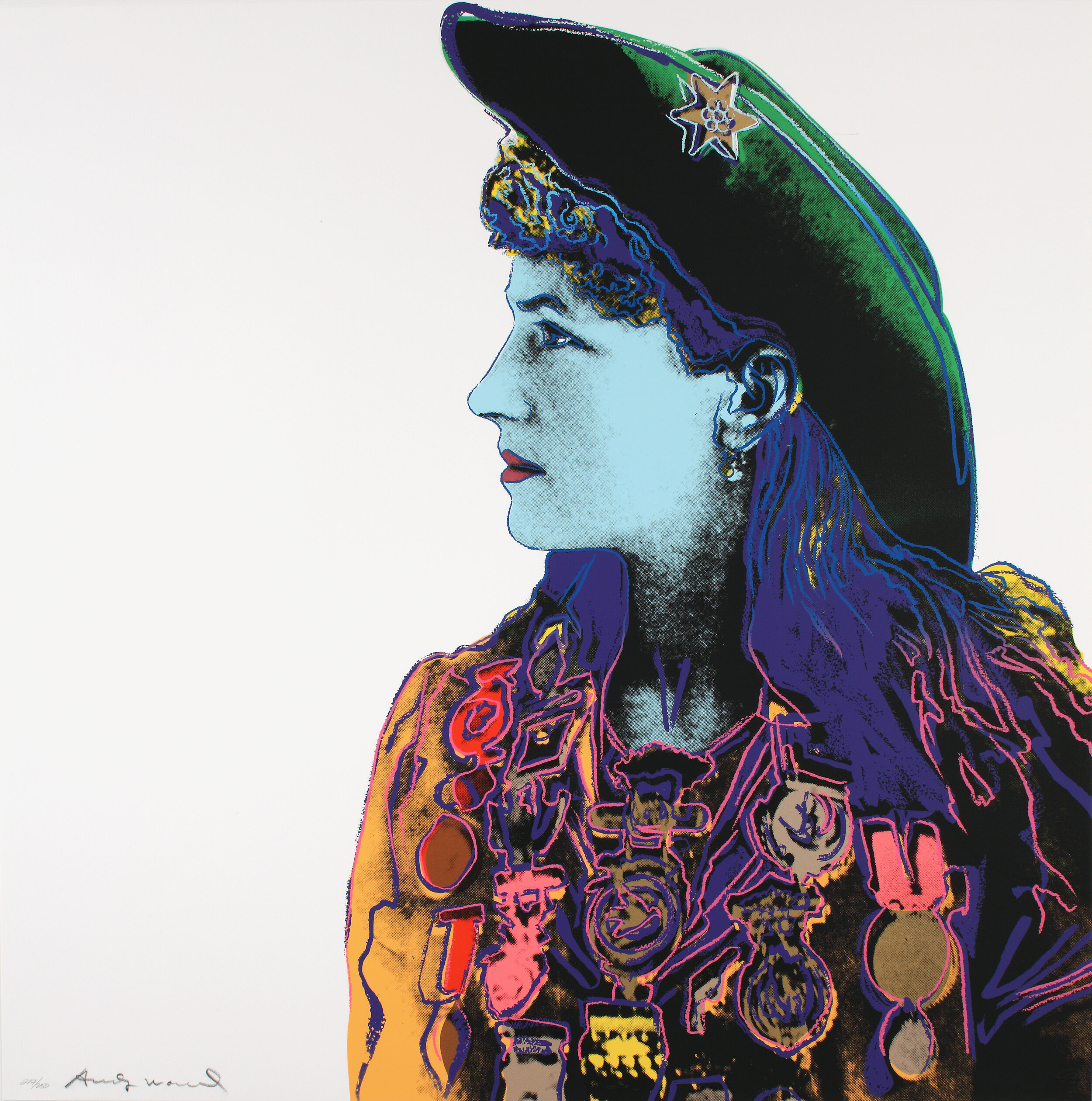The National Cowboy & Western Heritage Museum exhibits an exploration of the Pop Art icon’s love for the American West.
Written by Karine Monie
It took many years to bring the show Warhol and the West to life, but it was worth the wait. Identifying and locating lenders of examples from Warhol’s “Cowboys and Indians” portfolio—which comprises 14 iconic images of Western subjects such as Colonel Custer, Geronimo, Annie Oakley and John Wayne—and the artist’s collection of Western art and memorabilia was one of the biggest challenges. But now, having debuted at the Booth Western Art Museum in Cartersville, Georgia, Warhol and the West is traveling to the National Cowboy & Western Heritage Museum in Oklahoma City, where it will be showcased from Jan. 31 to May 10.
Photographs, paintings, prints, film, fashion and accessories are included in the show, which illustrates Warhol’s passion for reinterpreting Western culture in a contemporary way. Among some of the artist’s subjects on display are Elvis as a movie gunslinger, Clint Eastwood, and Dennis Hopper, along with American Indian art, guns, Western artists R.C. Gorman and Fritz Scholder, and three Western movies he produced. “As a historian of the American West, the John Wayne, Custer and Theodore Roosevelt works are the most impressive artworks in this exhibition,” says Michael R. Grauer, curator of Western Art and McCasland Chair of Cowboy Culture at the National Cowboy & Western Heritage Museum. “All three figures have become mythological characters because they literally and figuratively played roles in most of the world’s understanding of the American West. Warhol clearly understood their power as symbols.”
“As a historian of the American West, the John Wayne, Custer and Theodore Roosevelt works are the most impressive artworks in this exhibition”
Warhol himself grew up watching B westerns and was fascinated by everything related to this culture. “Everybody at one time in their lives dreamed of being a cowboy—even Andy Warhol,” says Grauer. The artist used to wear cowboy boots (many paint splattered) and traveled often to New Mexico, Texas and Colorado, where he acquired many objects that are part of his personal collection.
“Mr. Warhol saw an opportunity to celebrate the American West,” the curator explains. “I think by manipulating Western images and figures that are all-too-familiar, he tempered [their] sacredness. I believe Andy Warhol, because of his early work as a commercial artist for products, understood that the best way to connect art with most people is through images with which they are familiar. […] [He] tried to use familiarity to educate and break down the barriers that usually keep most people from appreciating art.”





